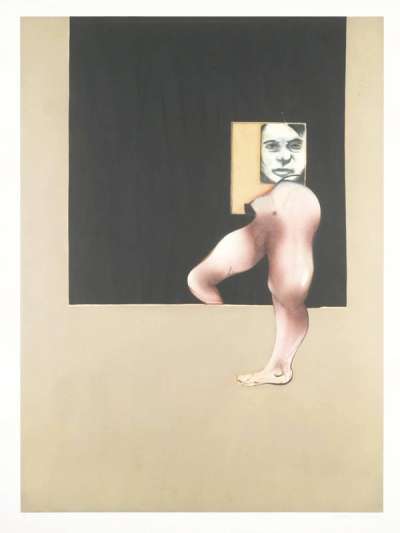
Triptych 1987 (centre panel)

Triptych 1987 (centre panel)
Signed Print
Francis Bacon
£6,500-£9,500Value Indicator
$13,000-$19,000 Value Indicator
$12,000-$17,000 Value Indicator
¥60,000-¥90,000 Value Indicator
€8,000-€11,500 Value Indicator
$70,000-$100,000 Value Indicator
¥1,300,000-¥1,900,000 Value Indicator
$8,500-$12,500 Value Indicator
AAGR (5 years) This estimate blends recent public auction records with our own private sale data and network demand.
There aren't enough data points on this work for a comprehensive result. Please speak to a specialist by making an enquiry.
Medium: Lithograph
Edition size: 180
Year: 1989
Size: H 68cm x W 50cm
Signed: Yes
Format: Signed Print
TradingFloor
Track this artwork in realtime
Watch artwork, manage valuations, track your portfolio and return against your collection
Track auction value trend
Auction Results
| Auction Date | Auction House | Location | Hammer Price | Return to Seller | Buyer Paid |
|---|---|---|---|---|---|
| October 2022 | Cornette de Saint Cyr Paris | France | |||
| October 2022 | Cornette de Saint Cyr Paris | France | |||
| June 2022 | Cornette de Saint Cyr Paris | France | |||
| March 2022 | Sotheby's Online | United Kingdom | |||
| May 2021 | Stockholms Auction House | Sweden | |||
| June 2015 | Karl & Faber | Germany | |||
| March 2015 | Christie's London | United Kingdom |
Meaning & Analysis
Triptych 1987 (centre panel) is an aquatint created by Francis Bacon in 1989. It is part of a series of a triptych by Bacon depicting details of a bullfight. The work expresses the tense relationship between animals and humans. Throughout his life, the artist was fascinated by animals and their raw behaviours but more so with the animalistic behaviours in humans. He believed that civilisation and the way that humans behaved with others was a mere thin veneer masking the animalistic instincts of humankind.
In this study, Bacon develops the beginnings of a dark sandy ring contained within a fiery orange interior. At the centre of the study is a panel containing an anatomical detail of the collision between a bull and a matador. A flesh-toned leg emerges from the block-blue plane and is rested upon a wooden plank in triumph. At thigh-level, what appears to be a bull’s horn – also surrounded by supposedly human, flesh-coloured tones – protrudes out of the background with a threatening dynamism.
Employing a geometric framing device - a regular feature in Bacon’s works – commands the attention of the viewer to the anatomical detail of the truncated human form. The starkness of the background draws attention to the relationship between the human flesh and the animal’s horn as it eminently pierces through the skin. This print is part of an edition size of 180.
